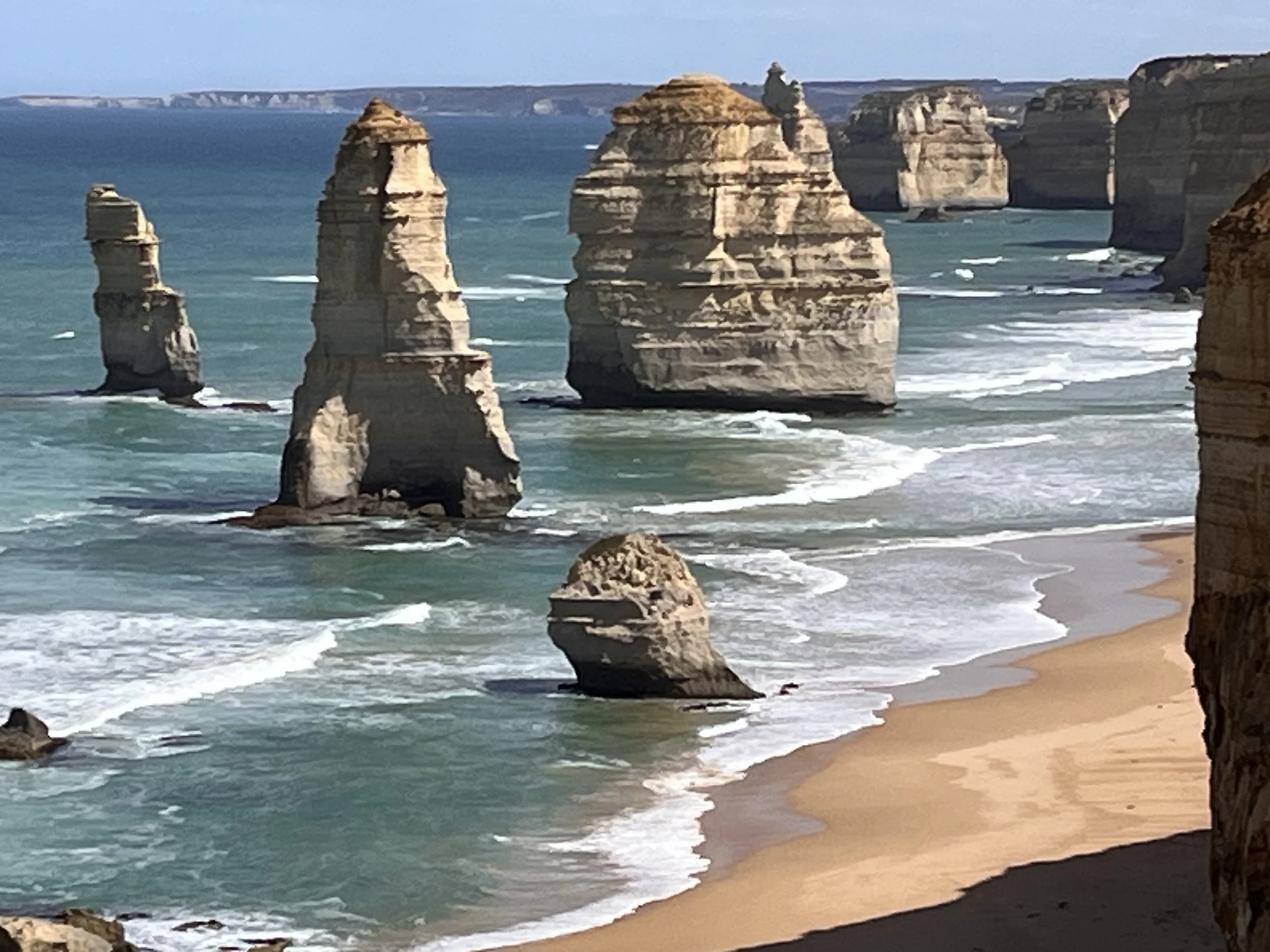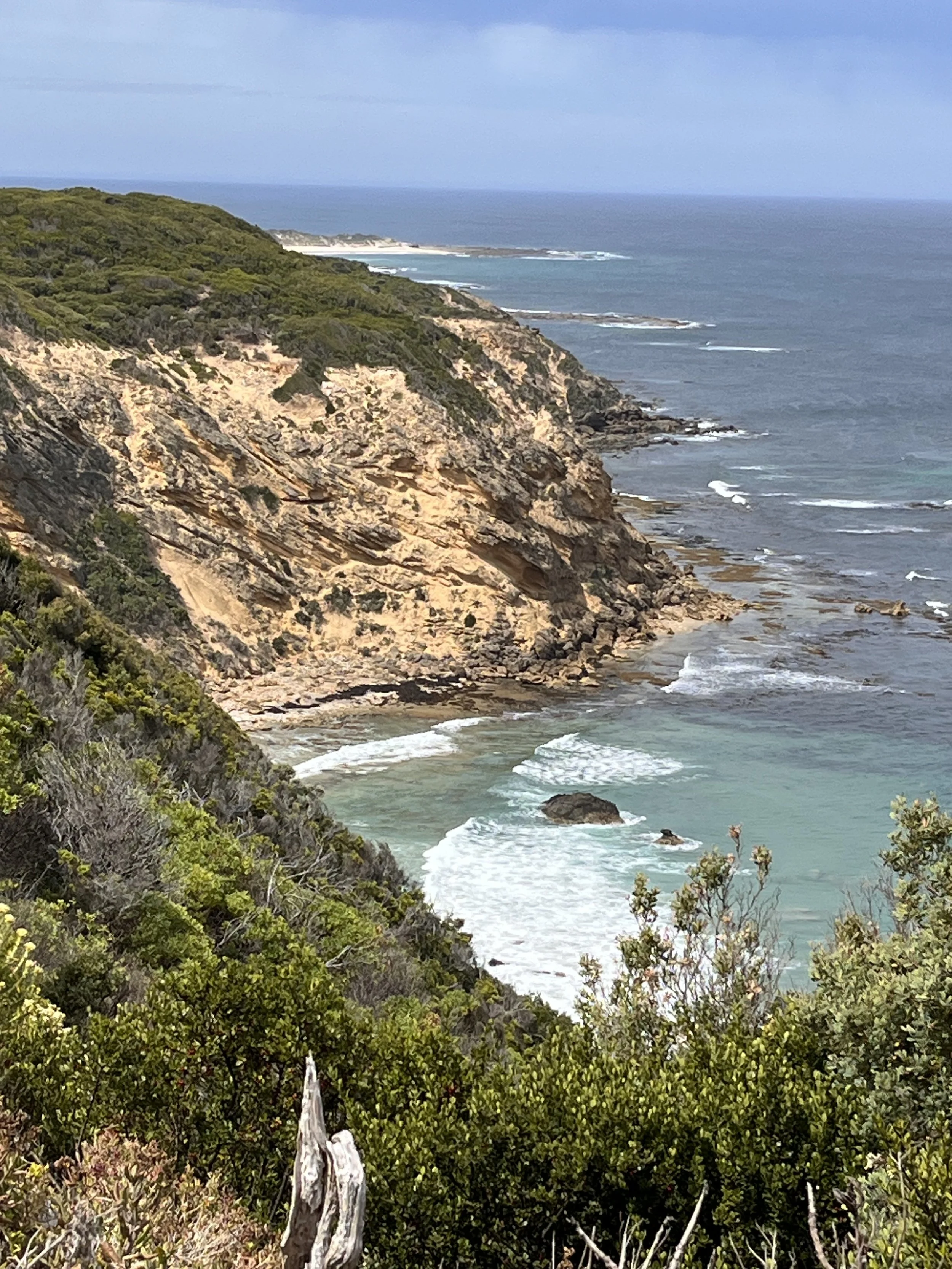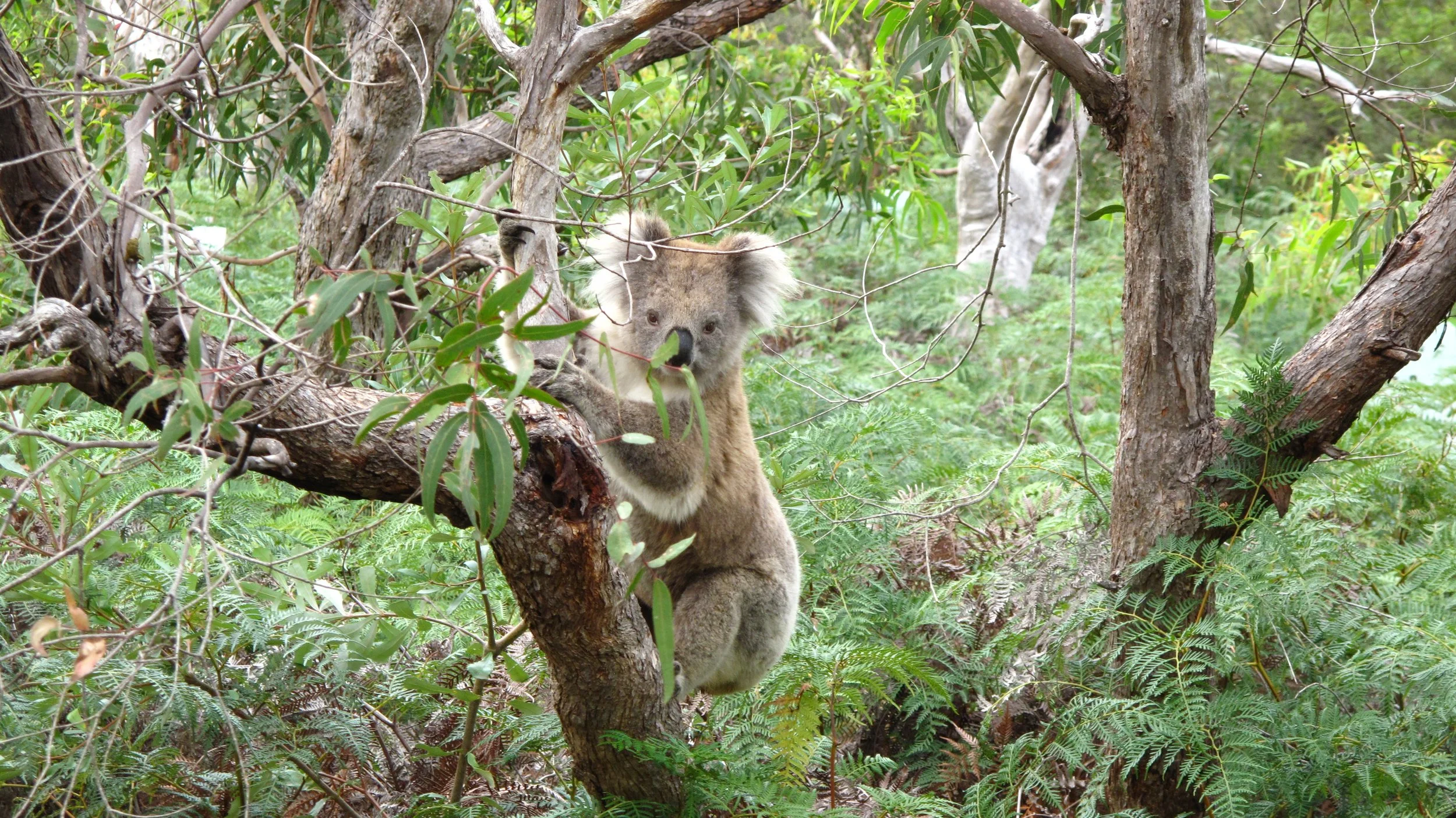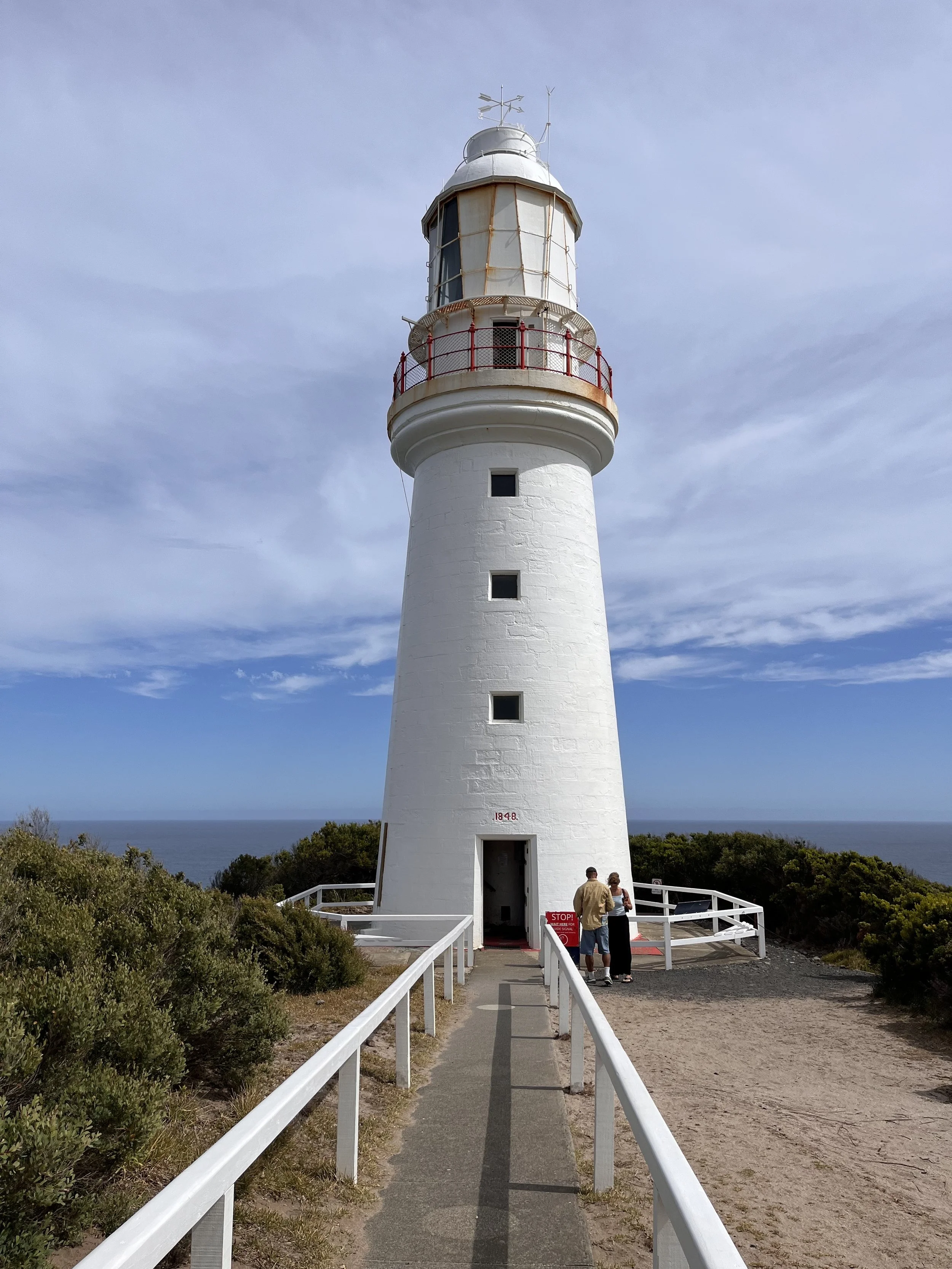Australia. Sea Stacks, Wild Koalas, and Other Wonders of Victoria’s Bass Straight
The Twelve Apostles is a collection of limestone sea stacks along the coast of Port Campbell National Park in southern Victoria. Originally known as Sow and Piglets, the pillar-like landforms were renamed the Twelve Apostles (even though there were only nine) to draw more tourists. Seven of the original stacks remain standing and six can be seen from a single viewpoint. One stack collapsed in 2005 and another in 2009. The limestone monuments were formed during the mid to late Miocene (15 to 5 million years ago) through wave and water erosion. We stopped at the visitor center before taking a short trail to several overlooks. Before departing we followed a pathway from the edge of the bluff to the beach.
Following our visit to the Twelve Apostles we drove the famous Great Ocean Road eastward in the direction of Melbourne. The 240-kilometer section of highway extends from the southeastern coast of Australia between Allansford and Torquay. The road was built by and dedicated to World War I soldiers. It is considered the world’s longest war memorial. Passing through rainforest, the road offers access to landmarks, small towns, and beaches. Before World War I the area was sparsely populated and accessible only by boat or through bushwacking. The “South Coast Road” was begun in September 1919 with 3,000 former WWI soldiers serving as the workforce. Crews moved forward at an average rate of just three kilometers per day. Although explosives were used to clear rocky stretches, most work was done by hand. The first section of gravel highway opened in 1922. Initially, drivers paid a toll to use the road. The final road segment was completed in 1932.
Our second sojourn was a visit to Raymond Island, known for its collection of koalas. The island is located in the Gippsland Lakes region of Victoria, 300 kilometers from Melbourne. Six kilometers long by two kilometers wide, the island is named after William O. Raymond, a squatter who lived there in the 1840s. The name “koala bear” is something of a misnomer because koalas are arboreal marsupials and not related to the taxonomic family “bears” (large, carnivorous mammals with heavy paws, non-retractile claws, and shaggy coats). In addition to Victoria, koalas are found in the states of New South Wales, Queensland, and South Australia. Koalas have a heavyset body, a large head, and large rounded ears. Brown or silver in color, they average between four and fifteen kilograms in weight. Sharp, curving claws help them climb and remain suspended in trees. Koalas subsist on eucalyptus leaves that have low nutritional value and are toxic to most other organisms. Because of their relatively low metabolic rate, koalas sleep for up to twenty hours a day. Koalas aren’t especially social and spend much of their time alone. An adult male bellows to attract females. Babies, called joeys, live in their mother’s pouch for six to seven months. A koala can live from thirteen to eighteen years. Although they have few natural predators outside dingoes and pythons, koalas are at risk from hunting and habitat destruction.
We drove through Paynesville before parking and taking a free ferry to the island. Operating since 1889, the ferry is the only way for visitors to reach the island. Today about 3,500 visitors travel to the island each year and most walk the 1.2-kilometer Raymond Island Koala Trail. The trail begins near the ferry and zig-zags past private homes towards the far side of the island, eventually circling the Raymond Island Gippsland Lakes Reserve. In 1953, 42 koalas were brought from nearby Phillips Island and today the island has more than 300 koalas. We were fortunate to see about twenty, most asleep high in eucalyptus trees.
Just after our arrival, we saw a single large kangaroo (aka roo). Like koalas, kangaroos are marsupials with offspring remaining in their mother’s pouch for a few months after birth. Indigenous to New Guinea and Australia, kangaroos have large and powerful hind legs and a tail used for balance when hopping or leaping. Kangaroos are the only large mammal that uses hopping as its principal method of movement. They are capable of sustained speeds of 26 kilometers per hour and have been recorded moving 70 kilometers per hour for short distances. Kangaroos chew vegetation as cud and may regurgitate before swallowing. Shy among humans, they have lifespans of about six years in the wild and twenty in captivity. It is estimated that nine of ten animal-related roadway collisions in Australia involve kangaroos. Kangaroo meat has been a staple among indigenous Australians and continues to be popular because it is high in protein and low in fat.
Although not on our route, we decided to take a side road to the Cape Otway Light Station. The road to the lighthouse passes through Great Otway National Park. Considered Australia’s most significant lighthouse, the Cape Otway Light was established in 1848 as a warning to ships passing by the Southern Ocean’s Bass Straight. In 1859 a telegraph station was added when Tasmania was connected to the mainland with a submarine cable. Despite the lighthouse being in place, eight ships wrecked along the coast between 1851 and 1940. We toured the telegraph station and then took a path towards the lighthouse tower along a walkway flanked by white handrails. The tower is twenty meters high. Visible for 48 kilometers, its lamp could project a beam with an intensity of one million candle power in white and 4,000 candle power in red. Today, Otway is the country’s second and its oldest operating light station.






